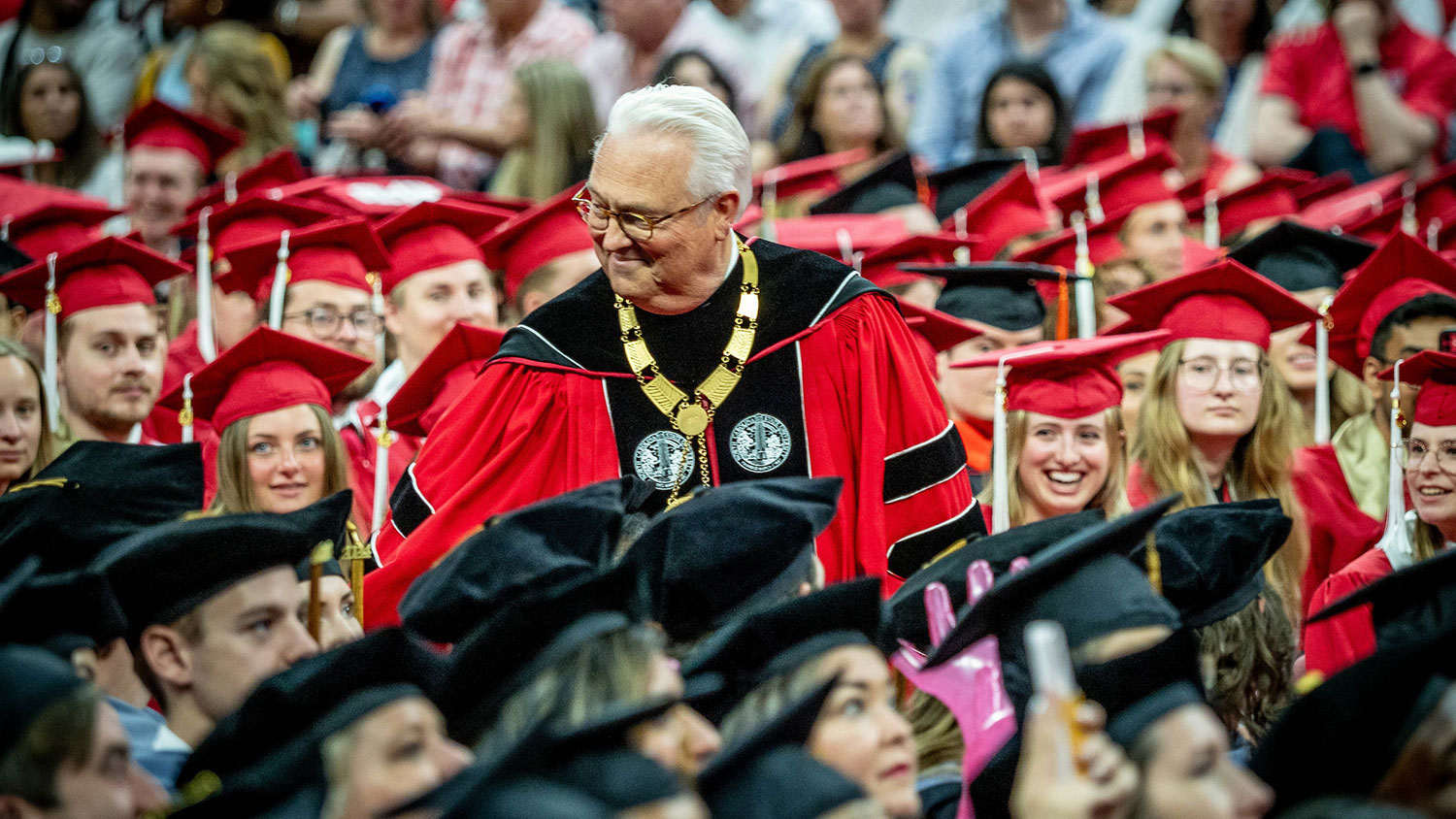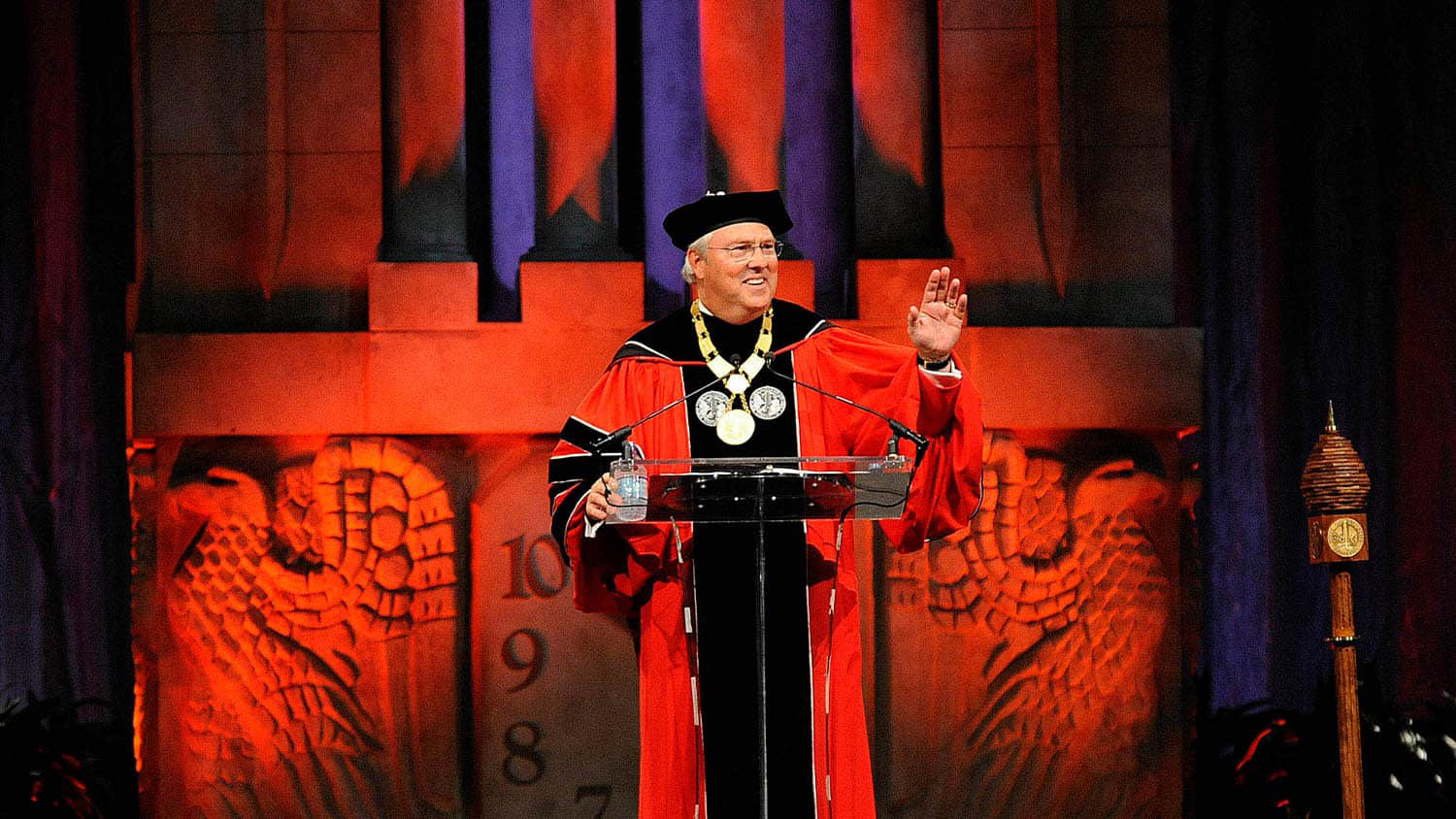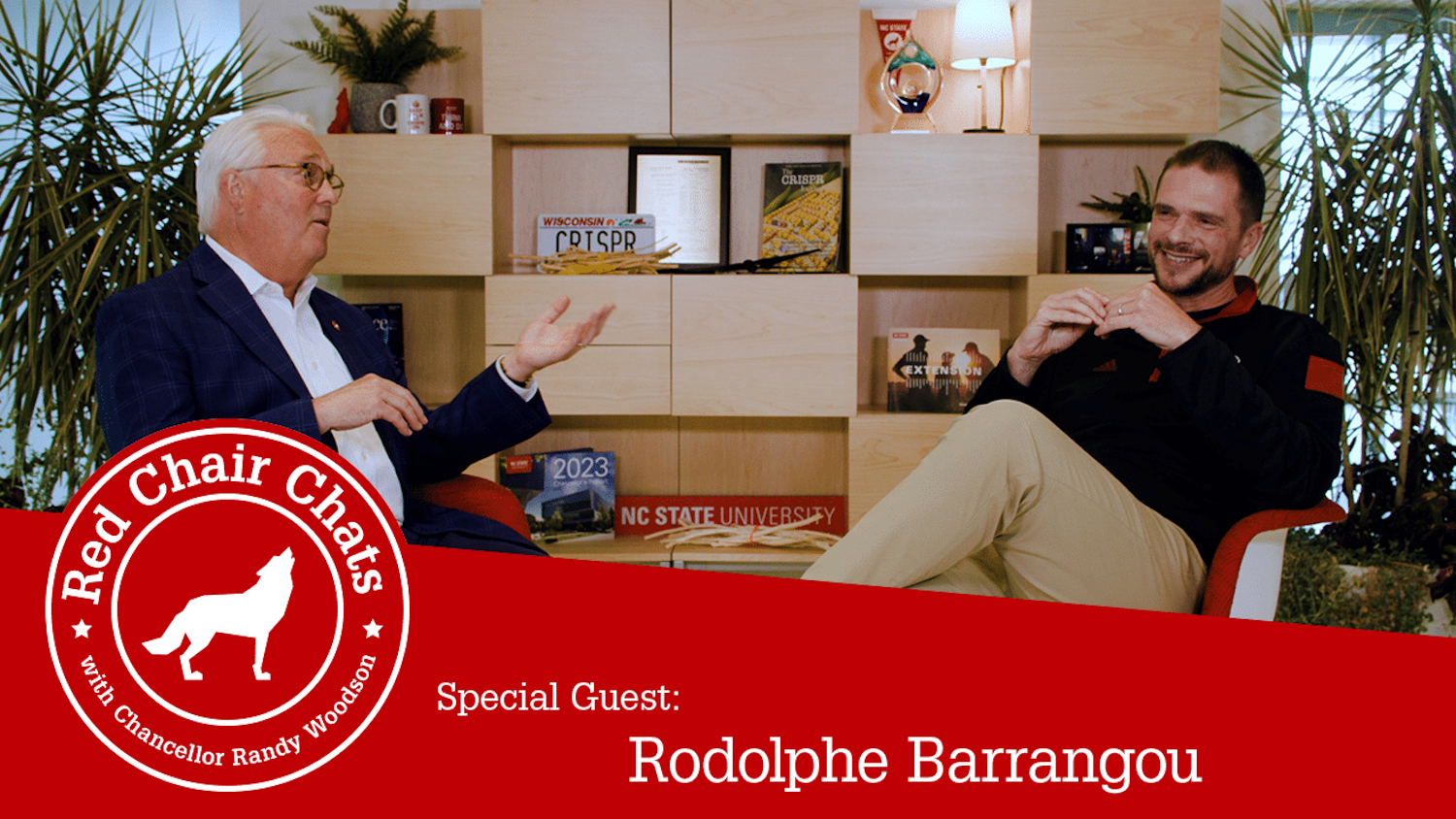Q&A with Traci Lamar: Fashion and Textile Design Showcase

Traci Lamar, a professor in the Department of Textile and Apparel, Technology and Management at Wilson College of Textiles, sat down to share the big picture impact of the Fashion and Textile Design showcase. After seven years, the showcase has grown in many ways — and with increased donor support, Lamar says, graduating students could truly demonstrate their full potential to industry leaders.
How did the Fashion and Textile Design showcase get started? How did you get involved?
The showcase is the culmination of our fashion and textile design program. It really is, in academic terms, a very new program. The FTD showcase came to be with the approval of the curriculum, and our first graduating class was in 2015. I am fortunate to be the program leader for our textile design component of the fashion and textile design program, so I got to be involved from the very first with the showcase. I’ve been there through all the things that have transpired since then, and the way we’ve been able to grow it and share it.
How is the showcase unique? Is there anything else out there like this?
We are not aware of anything else quite like our showcase. In addition to it being the culmination of the academic program, we also have two components: a runway show and an exhibit of textile design work. So we’re not necessarily the only program that has a fashion show, but our program has this spectrum of products and outcomes that is very unique. And the showcase itself is formatted very differently than most presentations of work that we would see in our peer universities, featuring student work that has literally been developed for some cases as far back as yarns in the process, clear through finished products, whether [that is] upholstered fabric or cushions or fabric samples, or garments that we would wear.
We engage the people who get to see our showcase in the process as well as the product. Through the exhibit, they’re able to see the student work, but they’re also able to look at what we call our development portfolios, or documentary portfolios, where they can actually look at the steps and the processes and understand how the students created the work that they’re seeing. So we’re pushing beyond the actual presentation of the products to the story of how they’ve been created. And it’s a very unique story because of the opportunities we’re able to give them in the Wilson College of Textiles, the only remaining college of textiles in the United States.
This event is absolutely invaluable for us in terms of continuing to grow our relationships with industry partners and continuing to support our graduates and our current students.
What is the importance of students developing their senior collections, and how can these collections connect them to future job opportunities?
Throughout their curriculum, they’ve been very engaged in focusing on various technologies and methods — whether that’s weaving, knitting, CAD software, learning to assemble products or drape fabrics. But it’s when they get to that senior collection that they’re able to have an opportunity to choose their own direction, express their own design voice, and then to pull together [what] they’ve learned into their own set of designs.
If we think about the idea of a capstone collection for a senior, whether it’s fashion or textile design, it’s very common to what we would see in an industry. Industries work with seasonal collections, whether it’s textiles or garments. The capstone parallels that, and it also gives the students experience. So how do I make a print that looks good with a woven? How do we make a knit that will coordinate with my prints and my wovens? Those are opportunities that really push them beyond the learning of an individual technique and how to take advantage of it.
In that sense, it moves them a lot closer to what they might experience in industry. It gives them great opportunities to work with technicians and lab and studio personnel, whether that’s in the sewing studio where they are assembling and working with one-on-one equipment, or if they are coordinating with a lab manager in one of the production labs.
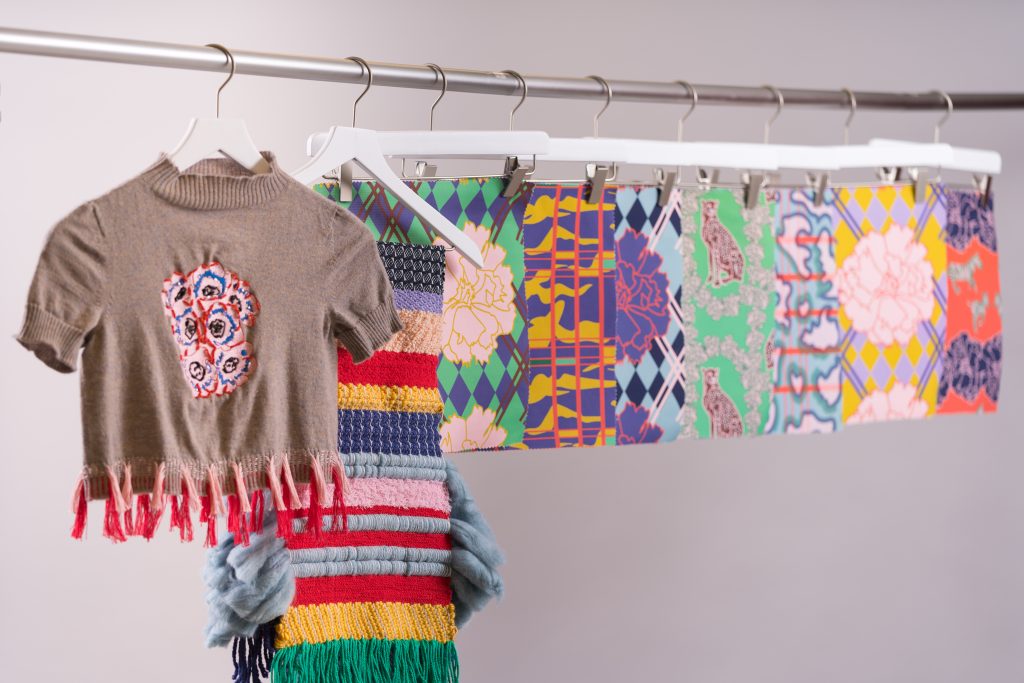
How do traditional design sensibilities, technology and the sciences converge in this event?
Undertaking the development of a senior collection is really very, very much an interdisciplinary endeavor. So not only are the students bringing together their voices in their training, in terms of design thinking, design process and design methods, they’re also leveraging the things they’ve learned in terms of textile science, in terms of marketing market research, color, color trends, and color development and color management and where the product’s going to be in terms of the actual textile technologies that they’re putting in place. All of these things really work to bring all of the pieces together into the senior capstone collection.
Over the last several years, students have shown collections featuring things you might expect, like woven fabrics, knitted fabrics, sewn fashions — but they’ve also tapped into such a wide range of new technologies and new things that are just right on the cutting edge of what’s being developed. Students have featured components that are 3D printed or building electronic components into their collections or developing products for differently abled individuals, as opposed to the mass market.
This year, one of the new things we saw is fashion students developing some virtual products — products that were created and conceived completely within a virtual environment, and modeled that way for a part of the showcase.
What do FTD participants go on to do, and how does the showcase impact their professional trajectory?
Design is a very visual field, and the showcase gives them the opportunity to bring together all that they have learned and present them in a very visual way to industry, to our community, to their family and friends, and to our colleagues here in the college. This is really important in terms of them seeking careers, because it gives students an opportunity to package everything that they’ve learned, and show it to potential employers while they can still leverage all of the equipment we have in the college, and the expertise of the faculty to do it very successfully.
Many of [our graduates] are working in design positions for global apparel companies, for global textile companies, for local firms and businesses. Some of them have been entrepreneurs and started their own labels — [including] very socially conscious and sustainable kinds of endeavors.
And lastly, the showcase allows our graduates to celebrate all they’ve accomplished during their time here and really to, I think, appreciate it in a way that they maybe wouldn’t otherwise. By pulling everything together and developing these beautiful collections, they really begin to appreciate the values that they’ve gained through their experience here. And I truly believe it positions them well to be able to speak about that with potential employers and other folks in industry who might be important in helping build their networks and move their careers forward.
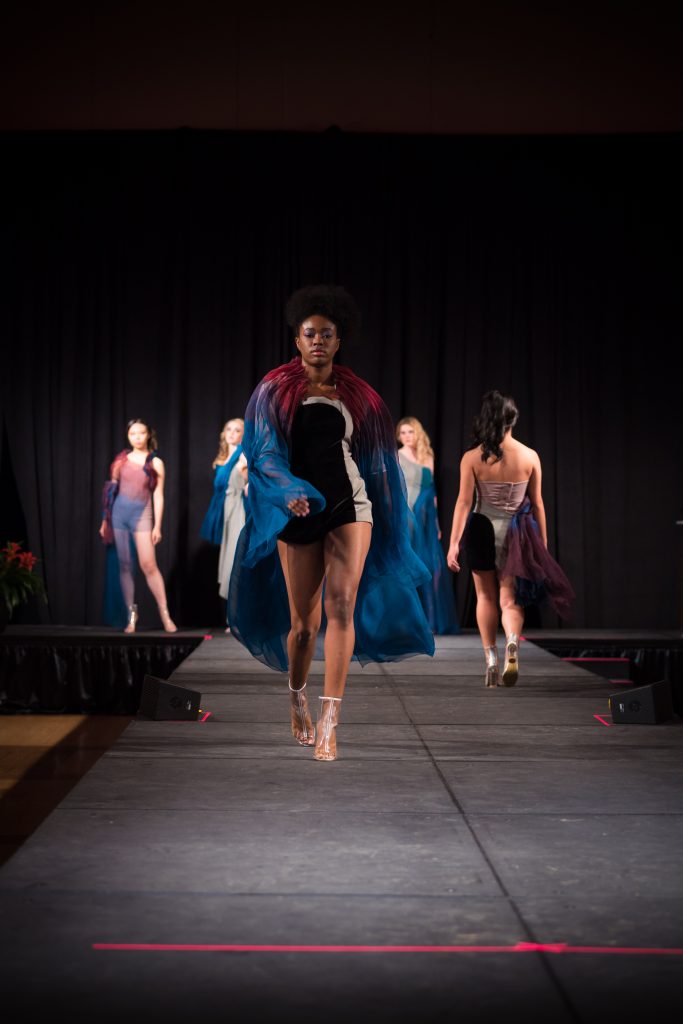
What is the industry impact at the showcase, and how are participants impacting the future?
We value our industry partnerships tremendously at Wilson College of Textiles, and especially when it comes to working with our showcase. We have always invited and shared with our industry partners the opportunity to attend the showcase and participate. We find that opportunities come along for the students that maybe wouldn’t have otherwise, because now our partners and those that they know begin to be able to really see what we can do here in the college and what the students have to offer to the industry.
What’s the most rewarding part of being a part of this event each year?
For me, being able to see all that the students have accomplished in their time here. I am fortunate over the last several years to be able to teach the students in the fashion and textile design program when they’re sophomores. And then I get to have them back as seniors as they work toward building their senior collections. And it’s so rewarding to see how they’ve leveraged the things that I was able to teach them and all of the things that they’ve learned along the way, bringing them together into these beautiful collections that also reflect their own design voices and their own passions.
I’m also very proud of the program that we’ve built and all that these students have to offer and their potential in becoming leaders and growing to be leaders in the industry for many, many years in the future.
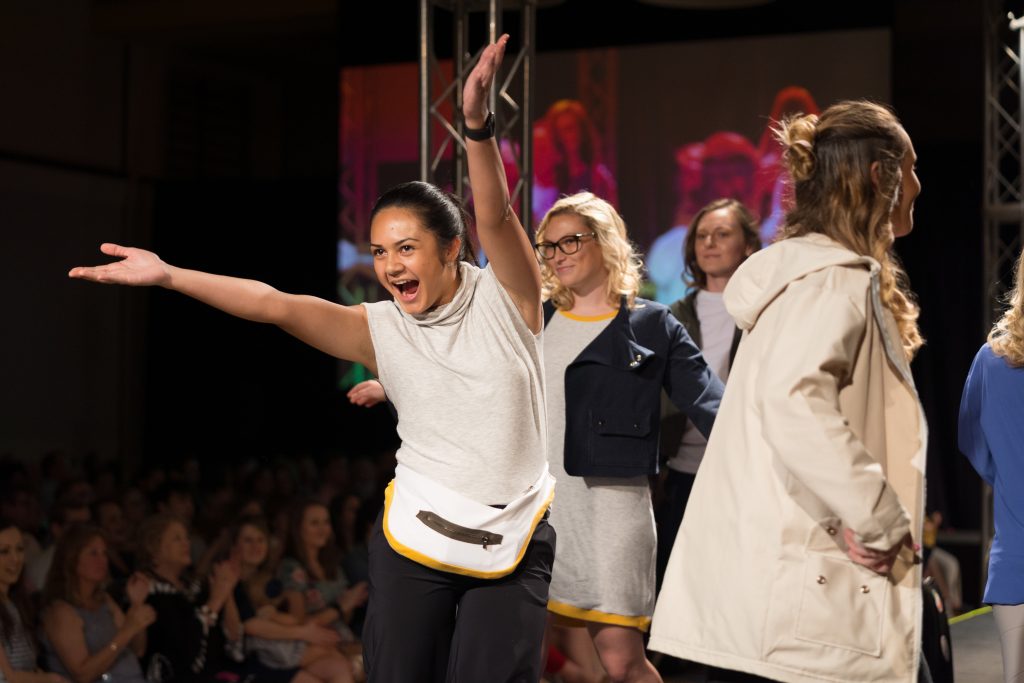
Why is donor support important for the FTD showcase?
Our FTD showcase is not supported by any kind of academic funding through the university or the college. The funding for our showcases always comes from support from donors and those who attend the showcase. So in the most basic sense, without donor support we couldn’t grow the showcase the way we have in the last seven years and, for that, we are incredibly grateful.
When we began, our showcase took place in the Wilson College of Textiles. Now, when we’re able to have an in-person show, we are able to host it in the Talley Ballroom and install exhibits in the Talley Student Center, which allows us to share much more broadly than we ever could in the past. We absolutely credit our ability to grow to donors and the donor support. When I say grow, I mean not only the size of the showcase, but the things that the students are able to do and therefore their passion for the industry and their craft.
What could increased donor support make possible for this event?
Increased donor support is not only going to help us continue the showcase, it’s also going to help us to grow and elevate it, to make this event into the opportunity for the students we want it to be. As a college, it’s not only about the showcase — it’s about everything that goes into creating the showcase. The students invest heavily in supplies and materials, and we do as much as we can to help support that. Donors can help supplement that as well, whether it’s a service such as digital printing on fabrics, or whether it’s raw materials or photos or funding that allows the students to go get those things that they need to work with translating that vision for their collection to a reality.
We want students to become less limited by their finances, and hopefully, one day they can really do everything that they envision and would like to do. Once we’ve got the expenses to run the show covered, then we can start to push into some of the other areas that would really foster and support not only the showcase itself but our students.
What would you want potential donors to know about supporting the showcase?
We have some incredibly passionate, creative, and talented young people, so donors can make every opportunity for them. Every time that we get a little broader exposure for the showcase, we’re cultivating our reputation and what we can do in the program, which in turn promotes the graduating students. This event is absolutely invaluable for us in terms of continuing to grow our relationships with industry partners and continuing to support our graduates and our current students.
From Fibers to Fashion
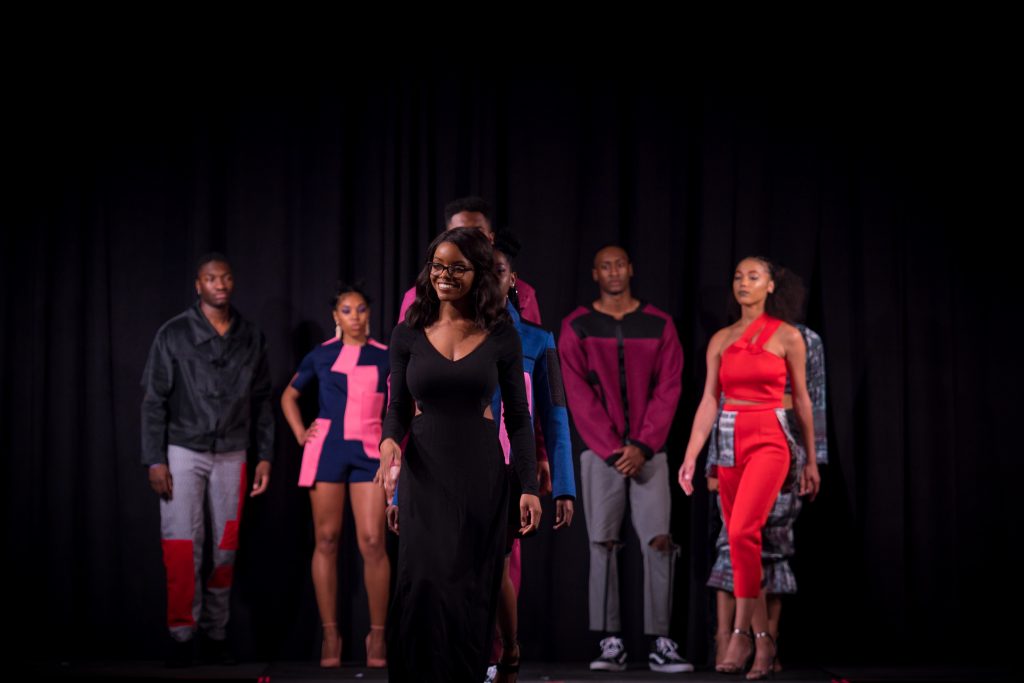
- Categories:
